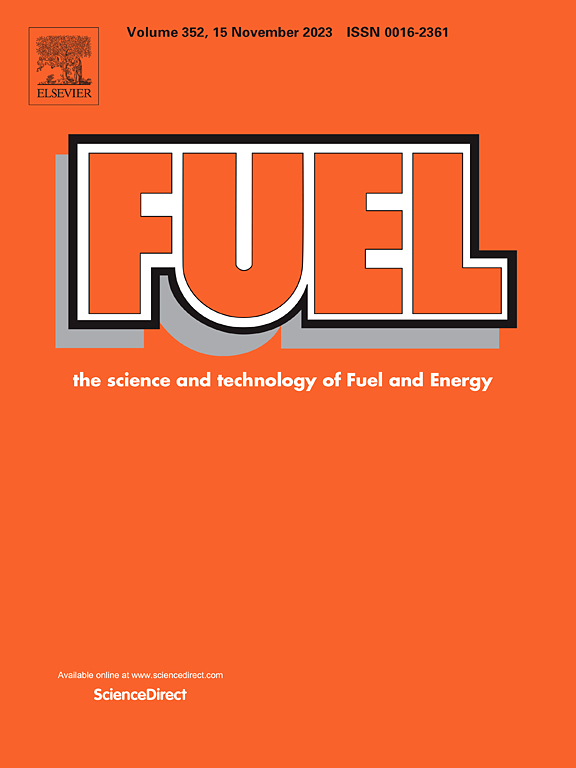用聚吡咯纳米复合材料修饰NiCo2O4纳米颗粒制备了一种有效的双功能电催化剂
IF 6.7
1区 工程技术
Q2 ENERGY & FUELS
引用次数: 0
摘要
使用高效的电催化剂将水分解成H2和O2是至关重要的。金属纳米复合材料与导电聚合物结合,特别是聚吡咯,为析氢和析氧反应(HER和OER)提供了电极材料。在这项研究中,我们使用水热技术创建了一个纯NiCo2O4@PPy纳米复合材料。用几种分析方法对生长的样品进行了检测。合成产物的XRD谱图显示为结晶型NiCo2O4立方相。金属-氧键和吡咯键的振动在红外光谱中显示出来。在碱性介质中使用NiCo2O4@PPy电极进行电催化,在基准电流密度为10 mA cm−2时,析氧反应(OER)和析氢反应(HER)的过电位分别为203 mV和109 mV。NiCo2O4@PPy纳米复合材料表现出更高的电催化效率和反应动力学,HER的Tafel值为46 mVdec-1, OER的Tafel值为6-4 mVdec-1。当只与NiCo2O4和PPy相关时,NiCo2O4@PPy纳米复合材料的TOF值和电子电导率值显著增大。在50小时的稳定性测试中,纳米复合材料的电流损耗最小,证明了其优异的稳定性;此外,它还具有1050 cm2的高电催化活性表面积。本文章由计算机程序翻译,如有差异,请以英文原文为准。
An effective bi-functional electrocatalyst for electrochemical water splitting using NiCo2O4 nanoparticles decorated with Polypyrrole nanocomposite
The use of an efficient electrocatalyst to split water into H2 and O2 is crucial. Metal nanocomposites were combined with conducting polymers, specifically Polypyrrole, to provide materials for the electrodes used in the hydrogen evolution and oxygen evolution reactions (HER and OER). In this research, we used a hydrothermal technique to create a pure NiCo2O4@PPy nanocomposite. The grown samples were examined using several analytical methods. The XRD pattern of the synthesized products showed a crystalline NiCo2O4 Cubic phase. The vibrations of the metal–oxygen and pyrrole bonds were shown in the FTIR pattern. Using a NiCo2O4@PPy electrode in an alkaline medium for electrocatalysis demonstrates low overpotentials of 203 and 109 mV, correspondingly, for oxygen evolution reactions (OER) and hydrogen evolution reactions (HER), at a benchmark current density of 10 mA cm−2. The NiCo2O4@PPy nanocomposite shows increased electrocatalytic efficiency and reaction kinetics, as indicated by its short Tafel values of 46 mV dec-1 for HER and 6–4 mVdec-1 for OER. When related to NiCo2O4 and PPy alone, the TOF and electronic conductivity values of the NiCo2O4@PPy nanocomposite are significantly greater. Testing the nanocomposite stability over 50 h reveals minimal current loss, attesting to its exceptional stability; furthermore, it exhibits a high electrocatalytic active surface area of 1050 cm2.
求助全文
通过发布文献求助,成功后即可免费获取论文全文。
去求助
来源期刊

Fuel
工程技术-工程:化工
CiteScore
12.80
自引率
20.30%
发文量
3506
审稿时长
64 days
期刊介绍:
The exploration of energy sources remains a critical matter of study. For the past nine decades, fuel has consistently held the forefront in primary research efforts within the field of energy science. This area of investigation encompasses a wide range of subjects, with a particular emphasis on emerging concerns like environmental factors and pollution.
 求助内容:
求助内容: 应助结果提醒方式:
应助结果提醒方式:


